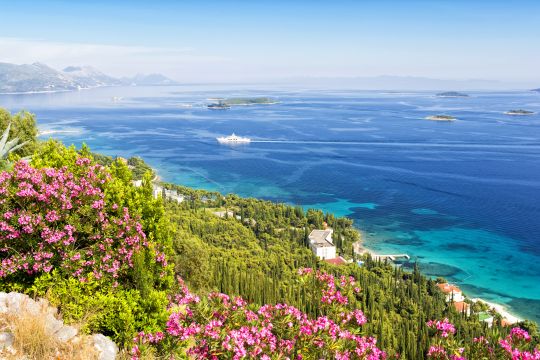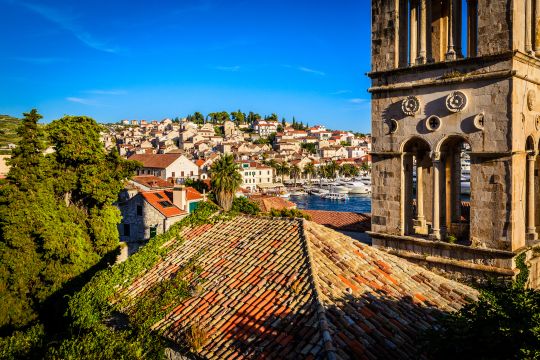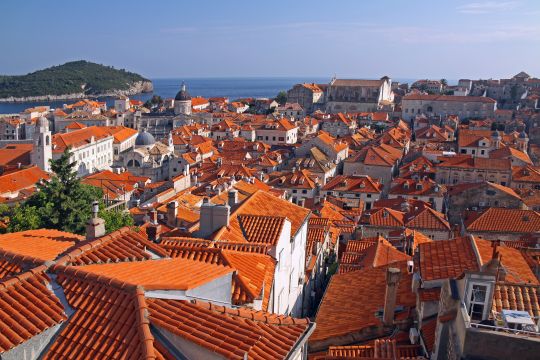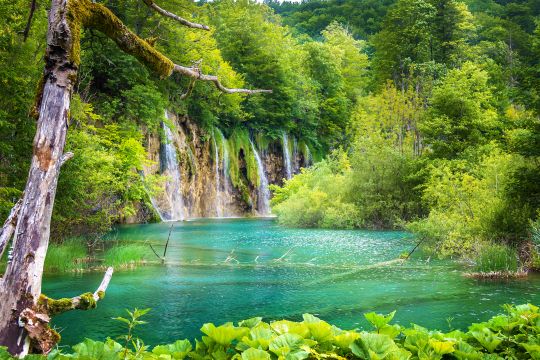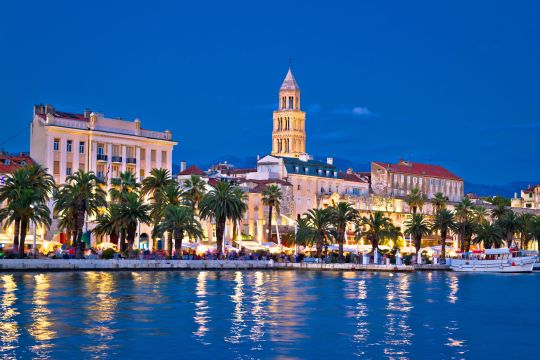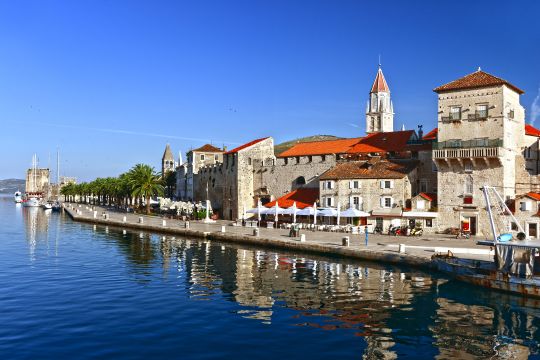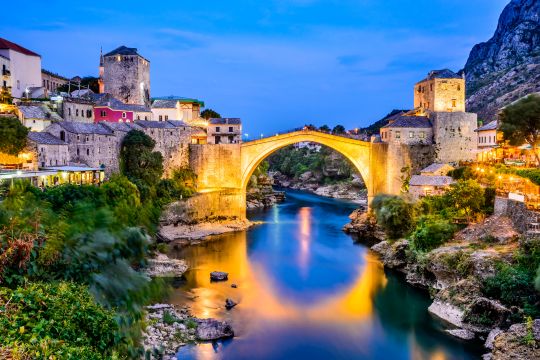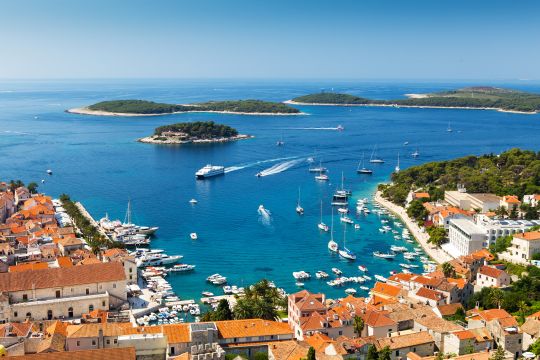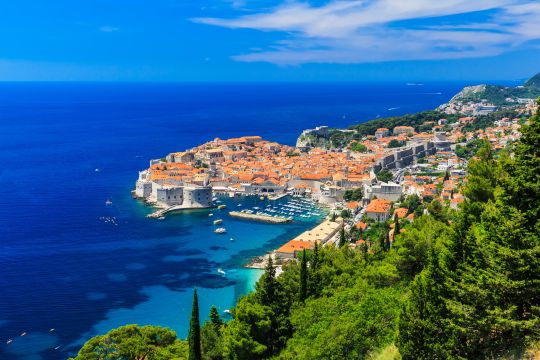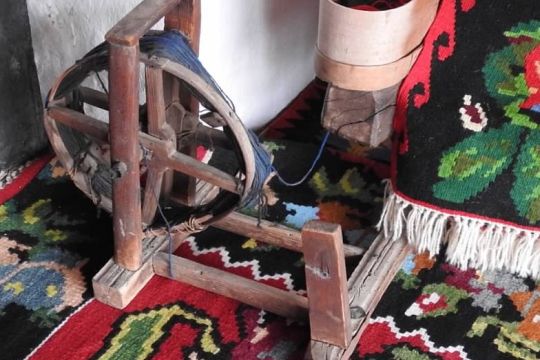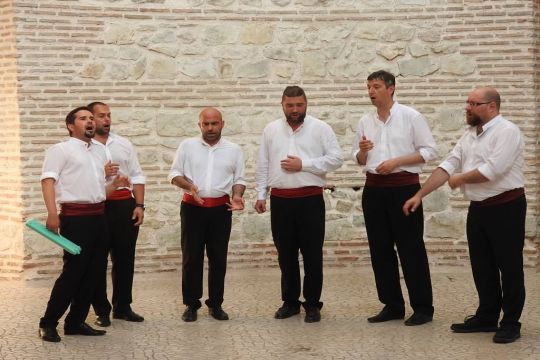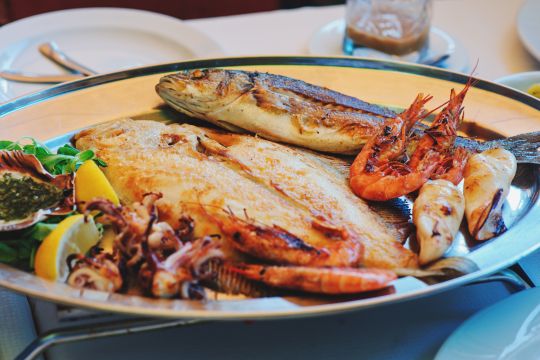The Dalmatian Coast
So what comes to your mind when someone mentions Croatia? Is it the Balkan War which ended over a decade ago, or is it the Dalmatian Coast with beautiful, exotic beaches surrounded by idyllic islands? While we need to be aware of the war, the last one of so many in the history of Croatia, the real focus is on the awe-inspiring nature and the incredible history of the place. Croatia has always fascinated people. It is commonly believed that Mljet Island near Dubrovnik is Homer's Ogygia, where mythical Odysseus met his Calypso nymph. It is also thought that the descriptions of Ilios in the Iliad and Ithaca in the Odyssey reflect geographical and archeological realities of the Dalmatian Coast, especially Peljesac Peninsula, famous for its vineyards. Today, NASA astronauts claim that the Adriatic Sea, with its limestone sea floor, is the bluest place on Earth. What is most fascinating is the intersection of different cultures which forms a cultural tectonic fault: the ancient Greece, the Roman Empire, the Venetian Republic, the Ottoman Empire, the Austrian-Hungarian Empire, the communist Yugoslavia, all in one place. There are Greek temples strewn among the hills, Roman ruins and ancient cities with marble streets, Byzantine mosaics in shadowy, candle-lit churches, ornate Venetian windows with carved parapets, and the Art Nouveau architecture so beloved by Austrians who ruled here for over a century.
Plitvice Lakes
The fairyland setting of the Plitvice Lakes is one of the Europe's great natural wonders. The vivid, constantly shifting landscape of the Plitvice National Park continues to amaze visitors with its exotic, lush and misty beauty. The park's 16 crystal clear, terraced lakes are interconnected by a series of waterfalls and cascades, each of a different, jewel-like color. The water of the majestic lakes is both clear and full of vibrant blue-green color. The climate of the area and the high oxygen content of the turbulent water favor...
The Marble City of Split
It is not always common knowledge that the narrow streets of Split's Old Town are actually hallways in Emperor Diocletian's Palace. Many restaurants and shops occupy the former palace rooms, the underground shopping center selling souvenirs used to store drinking water and wine in terracota amphoras. In addition, numerous museums, the National Theater, and old churches and other archeological sites in the Split region make it an important cultural attraction.
Trogir
Trogir has a fascinating 2300 years of continuous urban tradition. Its rich culture was created under the influence of Greeks, Romans, and Venetians. Trogir has a high concentration of palaces, churches, and towers, as well as a textbook perfect fortress on a small island, and in 1997 the town was inscribed in the UNESCO World Heritage List. "The orthogonal street plan of this island settlement dates back to the Hellenistic period and it was embellished by successive rulers with many fine public and domestic...
Mostar
Mostar derives its name from the bridge keepers, mostari, that watched over its historic bridge, Stari Most (Old Bridge). The Stari Most over the Neretva River, has been a symbol of both the unity and the divisions in this multiethnic city, ever since it was built in 1566. On one side of the Naretva is the old Turkish quarter, Kujundiluk. It is made up of a maze of narrow cobbled streets lining both sides of the emerald Neretva River, and its a haven of small shops, cafes and artists' studios, where artisans hammer intricate designs...
Venetian Heritage
As if the natural splendors weren't enough, Hvar also has a fascinating history, derived from its many years of Venetian rule. The intricately carved Venetian architecture and wide, welcoming seaside promenade of Hvar Town made the island the most romantic and the most chic in southern Dalmatia. The island's first inhabitants, who lived here in the Neolithic Era, left unique ceramics decorated with spiral ornaments in red, yellow, brown and white. Because such ornamentation is not found anywhere else, this kind of art has been named Hvar's Culture. Around 500 BC the island was settled by Illyrians, followed by Greeks from Paros who first developed Hvar Town and by Romans bringing their vines and wine cultivation which blossomed into a major industry here in the Middle Ages. Fishing, boatbuilding, cultivating lavender, rosemary and olives made the island prosperous. It reached its heyday in the Renaissance when its riches attracted poets, writers and scientists. The stunning Hvar Town displays the best preserved Venetian architecture in Croatia. The first, short intrusion of Venice onto Hvar Island occurred in the 12th century. But soon the island became part of the Byzantium and then the Kingdom of Croatia. When the pirates of Omis became a growing threat along the Adriatic coast, Hvar turned to Venice for protection, and Venice was only too happy to oblige. In 1331, Hvar became a part of the Venetian Empire, which reigned here for over 400 years, with a short break when it was part of the Republic of Ragusa (Dubrovnik). Most of the Hvar Town's beautiful sculpture dates from that period and many of the buildings are marked with winged lions, Venetian arched windows, marble columns and the opulence typical of Venetian Renaissance.
Hvar
The island of Hvar is the queen of the all Dalmatian islands. Someone described Hvar as "crystal blue sea, big green hills, clean air and lots of old stone," but it doesn't do justice to the island which is listed as one of the 10 most beautiful islands in the world. The island is extraordinarily green and lush, covered in lavender and rosemary, and with coastline indented with innumerable rocky coves with impossibly clear water. Hvar Town is a collection of narrow, winding streets, carved in white stone and with surprising...
|
Discover the Pearls of the Adriatic: the white marble Dubrovnik, facing the sea and surrounded by formidable walls, Split with Emperor's Diocletian Palace and the medieval Trogir. Visit the lavender covered island of Hvar, stroll among the blue-green terraced Plitvice lakes and waterfalls and sail among the lemon-scented Adriatic islands with tiny, red-roofed villages spilling to the sea.
June 12 - 20, 2024
9 Days / 8 Nights
This tour starts in Zagreb and ends in Dubrovnik
$5,460 per person/double occupancy
$1,820 optional single supplement
$400 early arrival, single or double room, includes airport transfer
Includes all fees and taxes
September 29 - October 7, 2024
9 Days / 8 Nights
This tour starts in Zagreb and ends in Dubrovnik
$5,660 per person/double occupancy
$1,840 optional single supplement
Early arrival: $400 single or double room, includes airport transfer
Includes all fees and taxes
|
The Two Shades of Red
But is it safe? Despite the fact that the war of independence from the former Yugoslavia ended more than two decades ago, many people still envision a ravaged land where visitors sleep in drab Soviet-style hotels and wander streets lined with bombed-out buildings. The truth is that this Mediterranean country of 5 million people feels like Italy or Greece, only fresher and less crowded. The remnants of Dubrovnik's troubled past are fading away. The city is again the premier tourist destination in the region. Yet the harsh history of the end of the 20th century should not be forgotten. Dubrovnik does not have much strategic value, except that destroying it would be a serious emotional blow to the Croatian psyche. Despite that, in 1991, Serbs began a months-long shelling of the city, razing centuries-old burgher houses and tearing up Dubrovnik's famed marble pedestrian streets. When the siege was over, 100 residents had lost their lives and 70 percent of the houses in the Old Town had been hit. Historic palaces were gutted by fire while the Sponza Palace, Rector's Palace, St Blaise's Church, Franciscan monastery and the carved fountains, Amerling and Orlando were seriously damaged. But unless you know where to look, the signs of the '90s conflict are hard to spot. Psychologically, the war has perpetuated many false beliefs on both sides, which hold on to warped views of the other. Physically, to see the evidence that the war took place here, you must walk the city walls. Looking down at the tile roofed houses you will notice what is apparently one of the few explicit signs of the war: bright red shingles on most houses replace the old, sun-faded tiles of which there are only a handful surviving. As you gaze across the rickety rooftops, both the new ones and the old ones, past Baroque and Renaissance spires which pierce the deep blue skyline, and where the turquoise sea crashes against the thick walls, it is hard to feel anything but wonderment at this city and thankfulness that it was not completely razed in the war.
Dubrovnik: the Pearl of the Adriatic
The people of Dubrovnik often proudly quote George Bernard Shaw, who visited the city in 1929: "If you want to see heaven on earth, come to Dubrovnik." The first thing you notice about Dubrovnik is its whiteness as the entire city is built of white marble. The nightly hosing with water keeps the streets and the buildings impeccably clean and the ban on excessive advertising preserves the medieval ambiance. In the evening, after the crowds leave, Dubrovnik looks exactly the way it looked in the 13th century...
Silk Cocoons around Dubrovnik
According to a Chinese legend, silk was discovered in the garden of Emperor Huangdi around 2,700 BC. The emperor wondered what was damaging his mulberry trees and ordered his wife, Xilingshi, to find out. She discovered that white worms were eating the leaves of the mulberry trees and were spinning shiny cocoons. She accidentally dropped a cocoon into hot water while preparing tea and, as she was trying to remove it, saw a delicate silk filament unraveling from the moistened cocoon.
Klapa Music
Klapa singing is a well-known folk singing phenomenon of coastal-urban and suburban areas and the islands of Dalmatia. The character, musical content and style of klapa were dynamically modified throughout the time, freely adopting new changes. That is one of the reason for the present day popularity of the klapa, especially among the younger generation, and a certain sign of long-lasting future of the klapa. Traditionally, the individuals who sing in the klapa are men.
Croatian Cuisine
In many ways, Croatia is at the crossroads showing the influence of the Latin, Slav, Byzantine and Finno-Hungarian worlds. Croatian gastronomy is a reflection of the cultural mosaic of the country that is the gateway to the Balkans, the place where central Europe and the Mediterranean intersect, and a land that remains deeply Slavic despite its ties to Latin Rome. There are a number of different Croatian cuisines which can be grouped according to three main regions...
Water and Wine
Although Dubrovnik, overlooking the aquamarine Adriatic Sea, is defined by water, the beautiful coast of Dalmatia has a serious competitor: the Dalmatian wine. The Dalmatian cuisine of the fresh sea fish, shellfish, the famous prosciutto, sheep's cheese and salted olives and capers is traditionally accompanied by wine. Dalmatian wines, like olive oil and salted olives, have been highly esteemed since ancient times. Grape cultivation in Croatia pre-dated the Romans by several hundred years, and became more organized under the Roman Empire. Vineyards and winemaking survived invasions by marauding tribes and the anti- alcohol policies of the Ottoman Empire. This resilient winemaking culture is shared with the surrounding nations, notably Austria and Hungary. In addition, Croatia's forests have long been a prime source for cellar oak, used in casks for aging some of the finest Italian wines.
|
